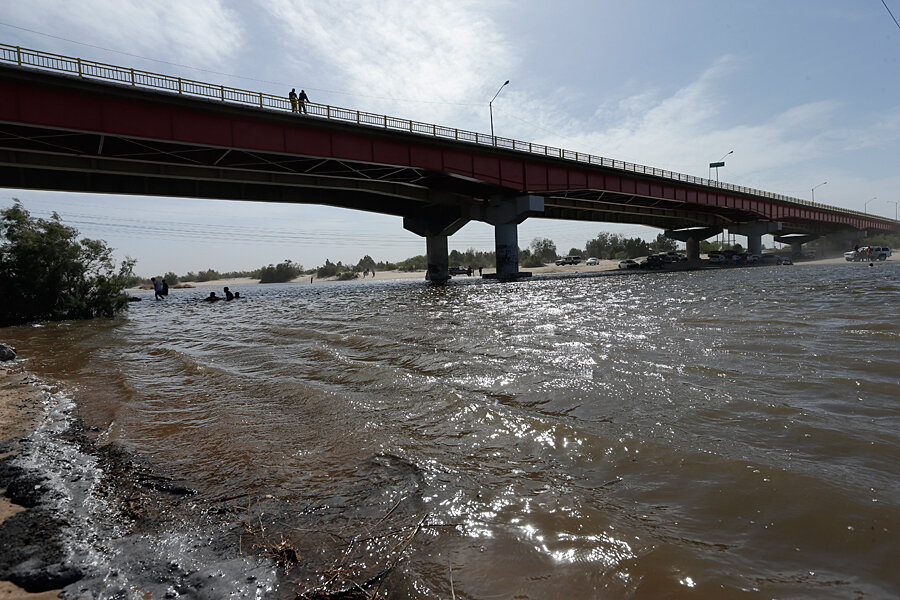An unusual sight: Water flows in Mexico's Colorado River
Loading...
The Mexicans living along the dry bed of the Colorado River near its delta on the Sea of Cortez are seeing something unusual: agua.
A release of water from a dam at the US-Mexico border means that water is flowing again toward the parched delta of the shared river on Mexico's Sea of Cortez, and it is bringing joy. Water hasn't reached the delta in many years.
The goal of the release of 100,000 acre-feet of water is to restore the Colorado River's flow in Mexico and restore wetlands along the shores of the dry riverbed. Some 300,000 migrating birds once called the delta home.
In building the Glen Canyon and Hoover dams more than half a century ago, the United States started blocking and diverting the Colorado River, eventually siphoning it dry before it could reach its delta. Some 70 percent of its waters go to cropland along its US course. And it slakes the thirst of 30 million people in seven US states and parts of northwest Mexico.
The release of the water this week came when authorities opened the gates on the Morelos Dam, which sits between Yuma, Ariz., and Los Algodones, Mexico.
Authorities are releasing the water in pulses to simulate spring floods from snowmelt in the Rocky Mountains. Some 130 million cubic meters of water will be released over 57 days through May 18, the Secretariat of Foreign Relations said Friday.
The water for the pulse isn't coming at the expense of US consumers and farmers.
It's water from Lake Mead that Mexico banked there as part of its own allotment. According to this Outside Magazine online article, the water being restored to Mexico is less than 1 percent of the river's average annual flow.
"Today we're seeing the first result of our two nations spirit of cooperation dealing with one of the most challenging aspects of Colorado watershed management," US Consul General Andrew Erickson said in a speech at the Morelos Dam last week. Mr. Erickson runs the US consulate in Tijuana.
The pulse hit its peak Thursday but is expected to continue at a slower rate for the next eight weeks.





